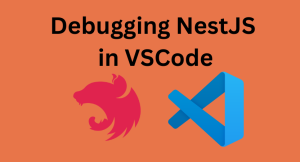It’s time for the next piece of the MapleStack puzzle: NestJS.
NestJS is a framework designed for crafting efficient and scalable server-side applications in NodeJS.
In MapleStack, NestJS plays a crucial role. It’s the foundation for the code that handles everything that happens on the server — like responding to API requests, managing data scraping, reacting to specfic events and keeping scheduled tasks running smoothly.
Pros:
- Quick Setup: You can get an API up and running with a basic set of endpoints quickly.
- Helpful Modules: NestJS comes with a lot of built-in helpers for tasks like user authentication, data validation, and logging, which saves time.
- TypeScript Support: It uses TypeScript, which makes your code more predictable, easier to maintain, and less prone to errors.
- OpenAPI Spec Compatibility: This ensures that you can share your API schema in a standard way.
Cons:
- Opinionated Framework: NestJS has its own way of doing things, which, while streamlined, might not mesh with everyone’s preferred workflow.
- Learning Curve: The framework’s reliance on advanced concepts such as Dependency Injection, Decorators, and Reflection can be daunting for newcomers.
NestJS stands out as a robust backend framework. It’s not just about handling requests; it’s about offering a structured approach to help with the repetitive decisions developers face when building backend services. It enabled me focus more on creating unique features and business logic that distinguishes MapleStack.
That’s the rundown for this week. You can catch up on MapleStack’s components through my earlier posts on building MapleStack.
Looking ahead: I’ll be talking about React and its role in MapleStack next week!
Have any questions, want to share your thoughts or just say Hi? I’m always excited to connect! Follow me on Twitter or LinkedIn for more insights and discussions. If you’ve found this valuable, please consider sharing it on your social media. Your support through shares and follows means a lot to me!
Components of MapleStack:
- PostgreSQL
- NestJS
- React
- Tailwind CSS
- AWS Cognito
- AWS S3
- Let’s Encrypt
- Mailgun
- ScrapingBee
- Stripe
- OpenAI
- Anyscale
- Canny
- Clearbit
- PostHog
- UptimeRobot


